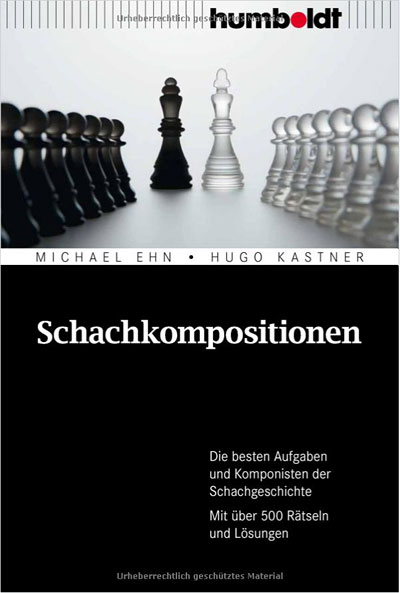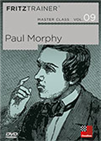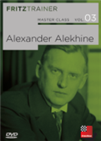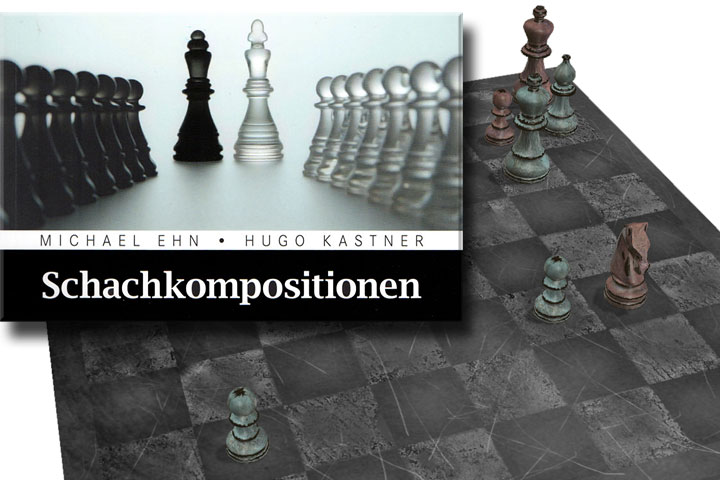When a puzzle tells a story
One of the best Christmas presents last year came from my friend, problem composer Werner Keym, who some months earlier had sent me his wonderful little book Chess Problems out of the box. This time it was a book called Chess Compositions, by Michael Ehn and Hugo Kastner. I have hardly been able to put it down.

The book contains "500 puzzles and solutions", but not just diagram positions with terse solutions discussed below them, or in a separate section at the end. No, this volume tells you something about each problem, a narrative that is often as interesting as the problem itself. There are also pages and pages of pictures, some extremely rare. Anyone know what Shinkman or Carpenter looked like? The book fills that gap.
The only disadvantage with this book — for most of our readers, but not for me — is that it is in German, and still awaits translation. You can get it at Amazon.com or Amazon Germany. The latter site contains a large selection of pages for you to preview.
Flipping through the book I found half a dozen problems I know and love, and many dozens of new ones which I am delighted to have found. In this article, I am going to give you a selection. Remember that you can move the pieces in each of the diagrams to try and solve them yourself. The full solutions are given at the end.
 Learn about one of the greatest geniuses in the history of chess! Paul Morphy's career (1837-1884) lasted only a few years and yet he managed to defeat the best chess players of his time.
Learn about one of the greatest geniuses in the history of chess! Paul Morphy's career (1837-1884) lasted only a few years and yet he managed to defeat the best chess players of his time.
Ehn and Kastner tell us that the great Paul Morphy needed more than an hour to solve this problem, whereas Alexander Alekhine did it in a few seconds. Would you like to compare your solving skills with the two World Champions?
 On this DVD GMs Rogozenco, Marin, Müller, and IM Reeh present outstanding games, stunning combinations and exemplary endgames by Alekhine. And they invite you to improve your knowledge with the help of video lectures, annotated games and interactive tests
On this DVD GMs Rogozenco, Marin, Müller, and IM Reeh present outstanding games, stunning combinations and exemplary endgames by Alekhine. And they invite you to improve your knowledge with the help of video lectures, annotated games and interactive tests
In this problem by the British composer Godfrey Heathcote you should look for the most absurd and meaningless move you can imagine. Found it? Then you have also found the solution to the problem.
Again it's a very surprising move that mates in two, the one we would least expect. That is the point of this composition.
This is a truly historic problem — for the first time in composition history, it demonstrates a perfect Allumwandlung! What is that? The term comes from the German and has entered the vocabulary of problemists, who often shortened it to "AUW". It denotes a pawn promotion to all four pieces, in this case on the same move on the same promotion square. The Danish composer said that it had taken him twelve years (!) to find this construction.
Ehn/Kramer tell the story of one of the most famous problems of all time — called Excelsior, after the poem by Henry Wadsworth Longfellow. In 1858, puzzle king Samuel Loyd offered a bet to his friend and colleague Denis Julien, who had boasted that he could always immediately spot the piece that would deliver the principle mate in a problem. Loyd challenged him to tell him which piece did not give mate in the above position. Try it yourself: if you don't know this problem look at the position for a while and pick a piece or pawn that is least likely to mate. Make a note of it and then look at the solution below.
This problem, by the one and only Pal Benko, is labelled "Modern Excelsior" in the book. You should try to solve it by moving pieces in the above diagram. It will actually play against you and defend against mate. But there is one subtlety on move four it might miss...
Checkmate. That's the aim of the game. There are numerous ways to checkmate the enemy king, but there are common patterns that recur over and over again, and having these at our mental fingertips is essential for when we want to finish the game.
Solutions to all the puzzles above

























